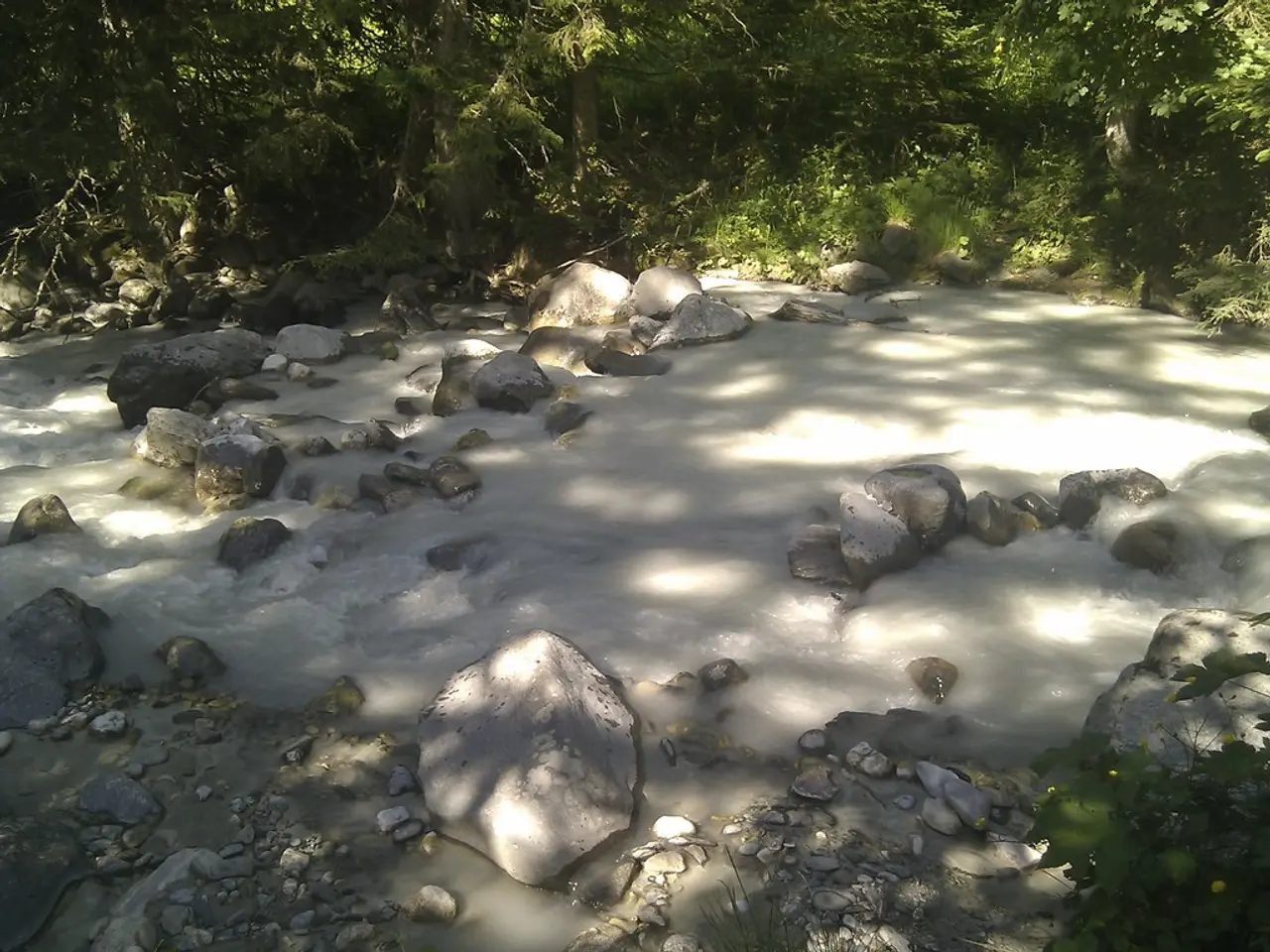Water's Status as a Physical Entity: Delving into Material Characteristics, Terminology, and Individual Viewpoints
Water, the lifeblood of our planet, is a substance of unparalleled significance. Its unique molecular structure and hydrogen bonding give rise to a set of distinctive physical properties that are critical to its states and biological roles.
Polarity and hydrogen bonding are key to understanding water's unusual behaviors. Water molecules, shaped like tiny triangles, have polar covalent bonds, causing an uneven distribution of charge. Oxygen carries a slight negative charge, while hydrogens have a slight positive one. This polarity enables strong hydrogen bonds between molecules, underpinning many of water's unique properties.
One such property is high surface tension and cohesion. Due to hydrogen bonding, water molecules strongly attract each other, resulting in high surface tension. This cohesion allows phenomena like water droplets and capillary action, important in plant water transport and other processes.
Water also adheres to other polar or charged surfaces, facilitating interactions with biological molecules and cellular structures.
Another intriguing property is the density anomaly. Unlike most substances, solid water (ice) is less dense than liquid water. This is because ice forms an open hydrogen-bonded lattice, causing ice to float on liquid water, insulating aquatic life in cold environments.
Water's high heat capacity and heat of vaporization also play crucial roles. Water absorbs and retains heat well, needing significant energy to change temperature or phase. This thermal stability moderates Earth's climate and maintains stable internal conditions for organisms.
Water's viscosity, while low, is higher than expected for its molecular size, contributing to resistance experienced in fluids, which has implications for movement in water and biological function.
As a solvent, water is unparalleled. Its polarity makes it an excellent solvent for ionic and polar substances, facilitating the dissolution and transport of nutrients, ions, and molecules necessary for life's chemical reactions.
Water's ability to transform between states is essential for life's survival. When water evaporates, hydrogen bonds break down, allowing water molecules to become more dispersed as water vapor. This vapor forms clouds, which block sunlight and release life-giving rain and snow.
Water's universality is evident in its role as a universal solvent, crucial for life's processes. From the earliest forms of life to the most complex organisms, water has been an indispensable medium.
In the face of challenges such as water scarcity, pollution, and climate change, it is more important than ever to appreciate water's unique properties and the role they play in our lives. By working together, we can ensure that future generations have access to the clean, safe water they need to thrive. Advanced technologies can remove pollutants from water, making it safe for drinking, industrial use, and environmental protection.
Reducing water consumption, using efficient appliances, and implementing drought-tolerant landscaping are all essential to conserving water. After all, water is essential for life, agriculture, industry, and energy production. It is the foundation of our world, and understanding its unique properties is the first step towards ensuring its continued availability and quality.
[1] Smith, J. (2018). The Molecular Basis of Life: A Physical Chemistry Approach. Wiley. [2] Atkins, P. W., & de Paula, J. (2018). Physical Chemistry. Oxford University Press. [3] Lehninger, A. L., Nelson, D. L., & Cox, M. M. (2000). Principles of Biochemistry. Worth Publishers. [4] Davy, H. (1808). Researches, Chemical and Philosophical. London: Taylor and Hessey. [5] Cavendish, H. (1781). Experiments to Determine the Weight of the Air. Philos Trans R Soc Lond, 71(1), 33-45. [6] Lavoisier, A. L. (1789). Traité Élémentaire de Chimie. Paris: Bachelier.
[1] Science and health-and-wellness are intertwined with the understanding of water's unique properties, such as polarity and environmental-science phenomena, like density anomalies.
[2] Water's extraordinary properties, including its high heat capacity and surface tension, have significant implications for various aspects of life, ranging from plant water transport to the dissolution of essential nutrients in our bodies.




